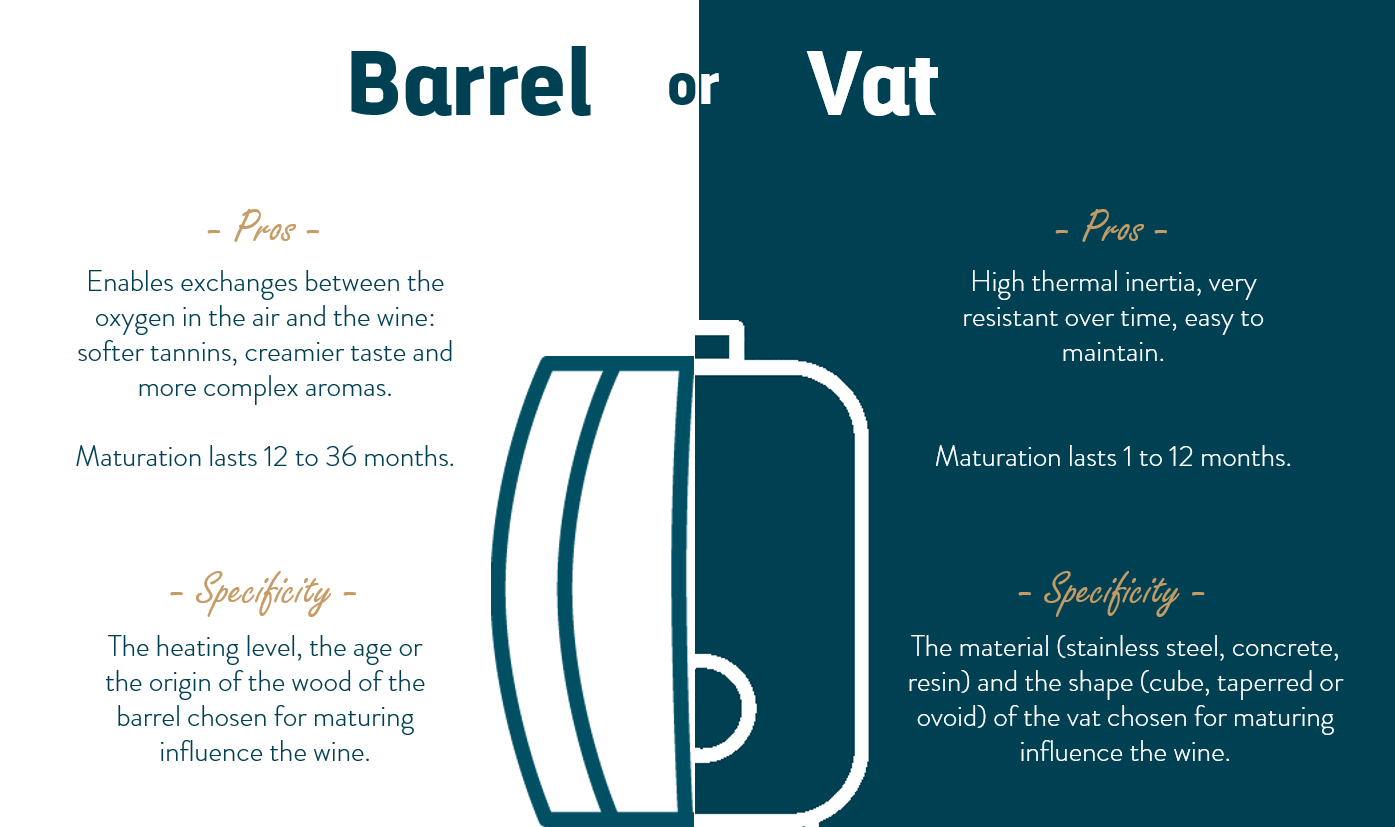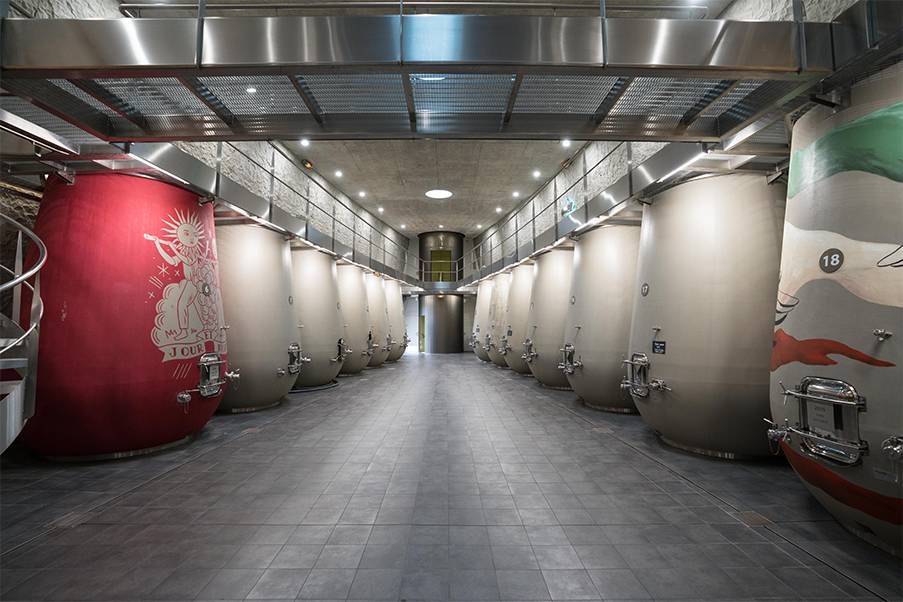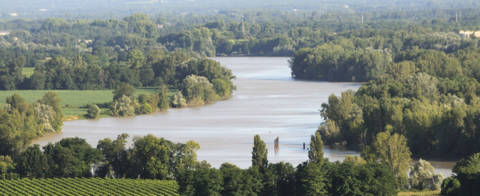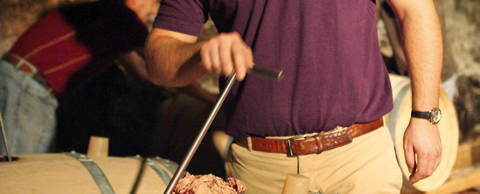The necessary cookies allow the site to function properly.
2. Maturation: a traditional method using state-of-the-art technology
Allowing wine to mature is essential as this results in a clear liquid and allows the various components of the wine to mix. During this process, the wines stabilise their colour, develop their aromatic potential and blend into a harmonious and balanced product. The wine can be matured in vats (especially those that must be drunk young) or oak barrels for the more complex varieties. The latter also benefit from the effect of the oak or concrete.

The secrets of ageing
For several years now, producers of white wines in Bordeaux, especially those aged in barrels, have been giving preference to a technique called “stirring the lees”, which allows the wine to keep in constant contact with its finest lees through frequent stirring. The benefit of stirring the lees is that it increases the complexity and rounded texture of the juices and preserves the aromas.
Nowadays, this technique is sometimes also applied to red wine. A lot of effort has also been made to better understand how juice and wood (i.e. the famous Bordeaux barrel and the wine it contains) interact with each other during the maturation stage.
The exchange of aromas that takes place during maturation is determined, among other things, by the “toast”, i.e. by the light internal roasting of the oak slats that make up the barrel. By carefully selecting the barrels used for ageing based on their degree of “toast”, winemakers can influence the aromatic profile of their wines and produce aromas with hints of vanilla or hazelnut or even a toasted aroma for white wines.


